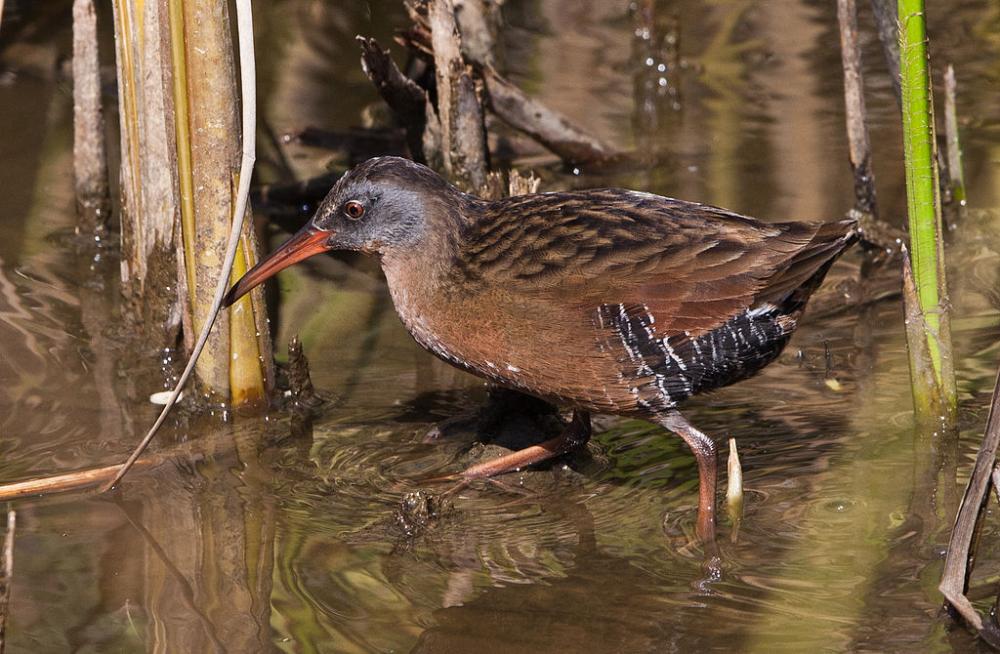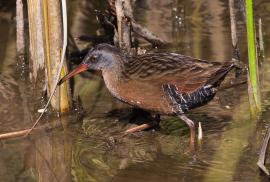Guide to Boreal Birds
Overview
This common but elusive marsh bird is most often detected by its call. Like other rails, the Virginia Rail prefers to escape intruders by running through protective marsh vegetation rather than by flying. When it does take wing, it often flies only a few yards before slipping back out of sight into the marsh. Despite its apparently weak flight, it migrates long distances each year and has even been recorded as far out of its normal range as Bermuda and Greenland.
Description
9-11" (23-28 cm). A small rail with a long reddish bill, rusty underparts, barred flanks, and gray cheeks. Much larger King Rail has dark bill and buff or rusty cheeks. Late-summer young birds are similar to adults, but have blackish breasts and dark bills.
Voice
A far-carrying ticket, ticket, ticket, ticket; various grunting notes.
Nesting
5-12 pale buff eggs, spotted with brown, in a shallow and loosely constructed saucer often woven into surrounding marsh vegetation.
Habitat
Freshwater and brackish marshes; may visit salt marshes in winter.
Range/Migration
Breeds from British Columbia east to Maritime Provinces and south to southern California, Oklahoma, and Virginia. Winters regularly on coasts north to Washington and Virginia, occasionally farther north.



